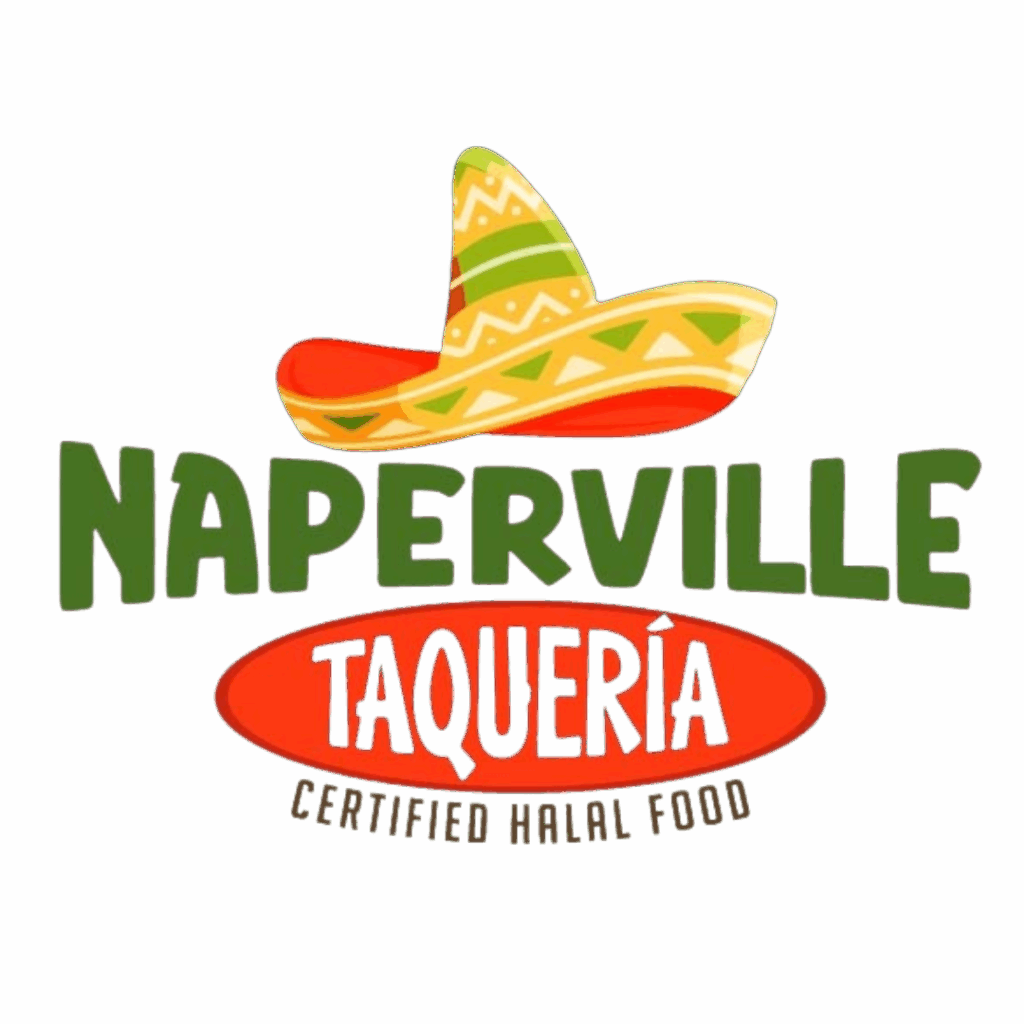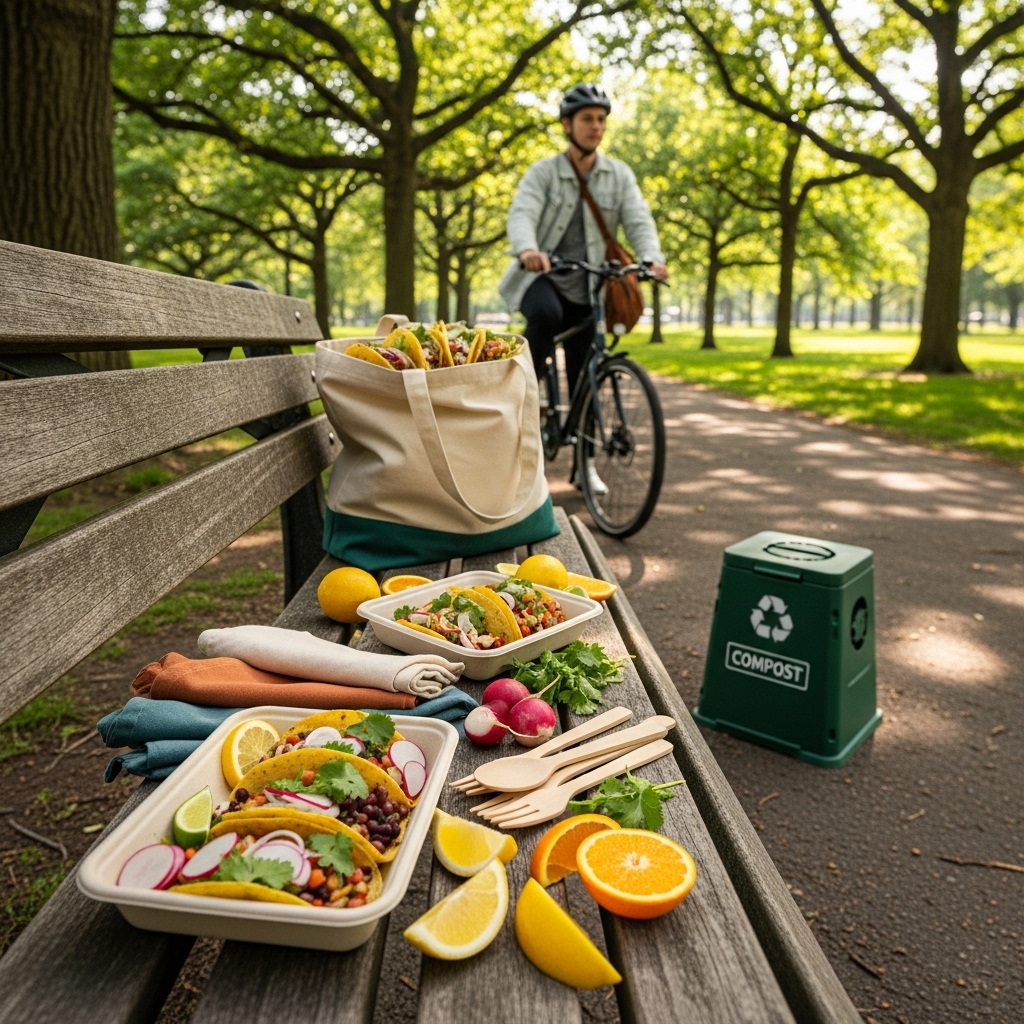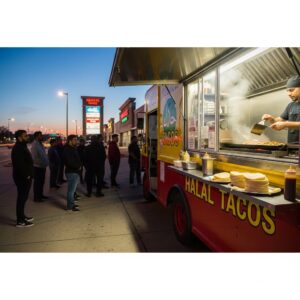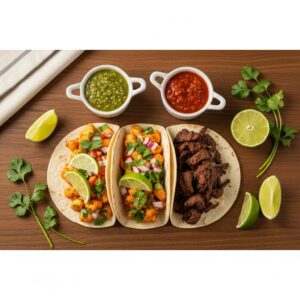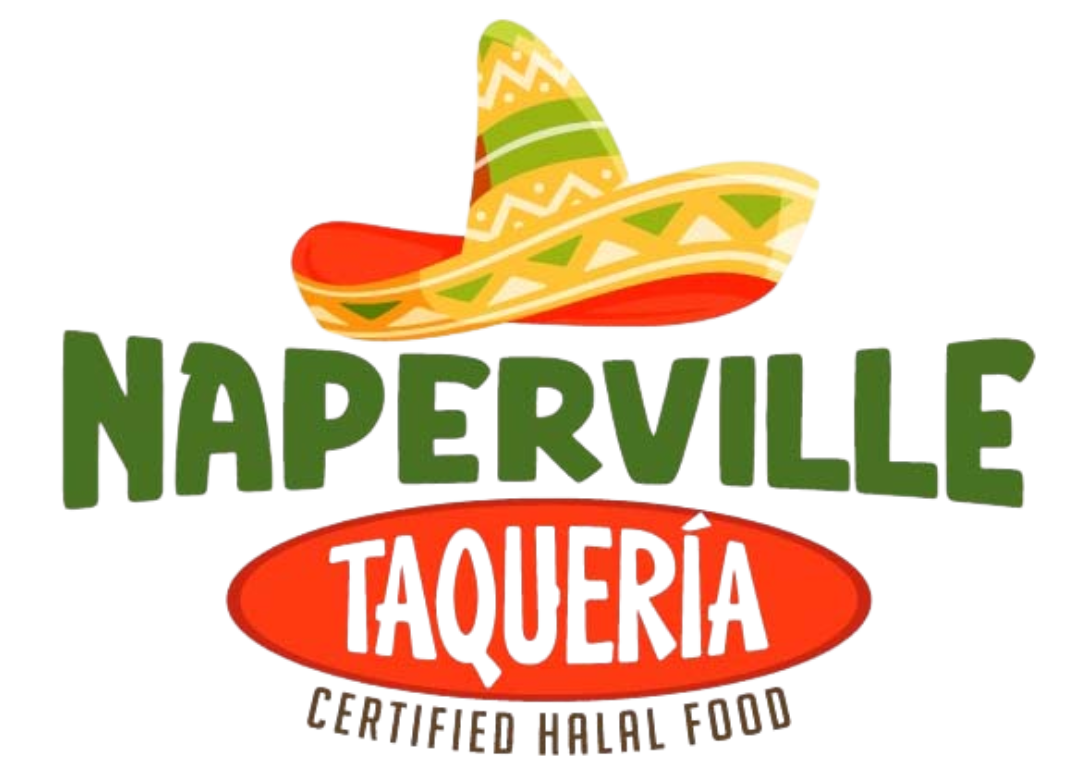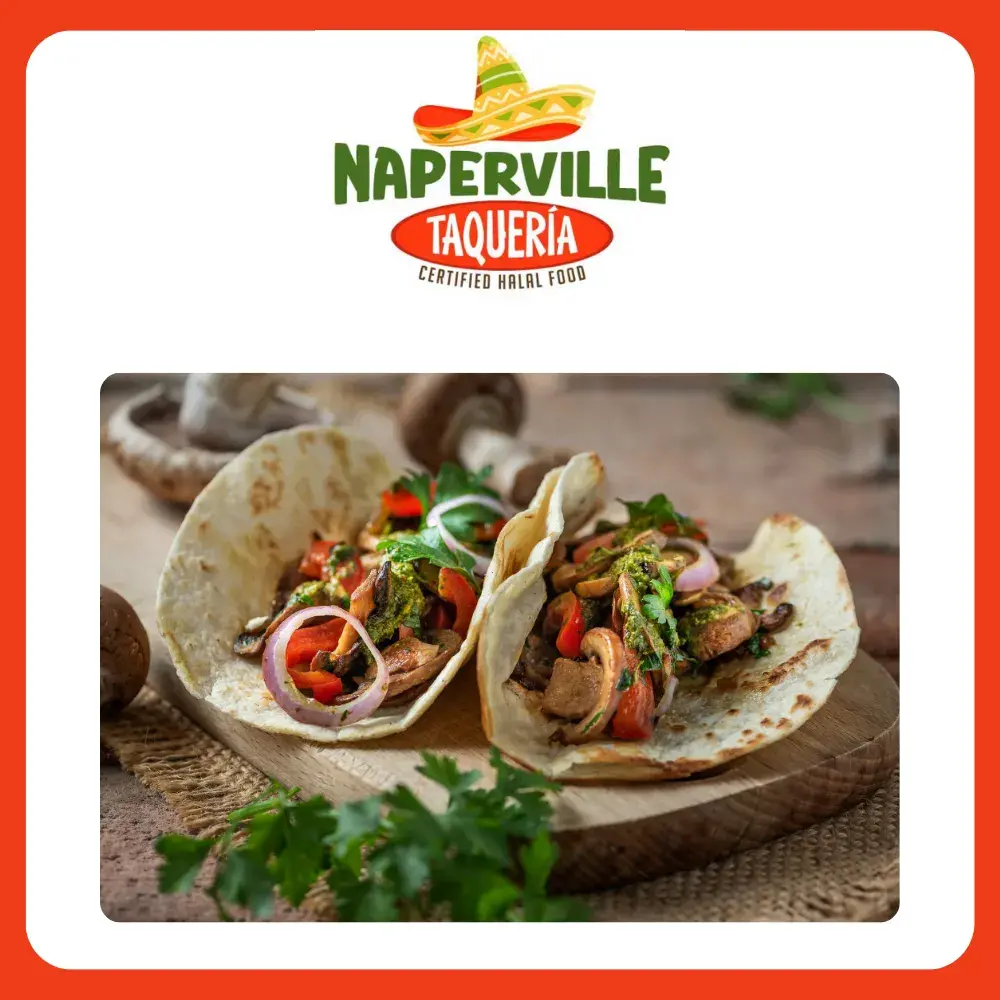Naperville’s love for tacos has never been a secret, and as conversations about climate and sustainability move from headlines to dinner tables, more of us are asking a reasonable question, what is the environmental footprint of our favorite handheld meal, and how can we make greener choices without losing the joy that makes tacos so appealing. The encouraging answer is that small, thoughtful decisions add up. From the tortillas we choose to the packaging we accept at the counter, there are practical ways to reduce impact right here at home. If you want to see where your choices meet what local kitchens are offering, a glance at the menu can be a helpful guide.
Food impact begins long before we place an order. It starts with agriculture, the energy used in growing food, and the miles it travels. Tacos are uniquely positioned to be climate friendly because they welcome lower impact proteins and a generous cast of plant ingredients, and they do not require heavy packaging to be delicious. The path to greener tacos is not a radical shift but a series of nudges that align flavor and sustainability.
Understanding protein footprints
Not all proteins carry the same environmental cost. In broad terms, ruminant meats have a higher greenhouse gas footprint, while poultry, pork, and plant proteins generally land lower on the scale. That does not mean you must avoid certain tacos altogether. It means balance and frequency matter. Enjoying a rich, slow cooked taco now and then while making plant forward choices more often is a pragmatic approach that respects both taste and the planet.
In Naperville, this balance shows up in menus that feature grilled chicken, fish, beans, and vegetables alongside deeper, longer cooked options. When you order across that spectrum, you are voting for variety that supports the environment and keeps the meal interesting. It is also where local sourcing can help. Shorter supply chains reduce transport emissions and often improve freshness, which translates to better flavor.
The tortilla question
Tortillas might not be the first place you look for environmental wins, but they matter. Corn tortillas are often made from simple ingredients and can be produced at scale with relatively modest inputs. When a kitchen nixtamalizes corn in house or sources from producers who do, the nutritional benefits may increase and the flavor improves, which means fewer add ons are needed to make a taco sing. Flour tortillas, while beloved, can sometimes involve more resource intensive steps depending on production. The green takeaway is not to abandon flour, but to notice when a corn option delivers the texture and aroma you love. Choosing corn more often can be a gentle, cumulative step toward lower impact eating.
Quality also intersects with waste. A flavorful tortilla encourages mindful eating and reduces the likelihood of leftovers getting tossed. When the base of the taco tastes great on its own, the entire meal feels more satisfying and complete.
Vegetables as climate heroes
Vegetables are the quiet power players in greener tacos. Crisp cabbage, bright salsas, roasted peppers, and quick pickles add color and nutrients while keeping the footprint light. They also stretch proteins further, meaning a smaller portion of meat can still feel indulgent when surrounded by vibrant plant textures. In summer, local produce shines, and asking what is in season can lead to tastier, lower impact choices. A taco built around zucchini, tomatoes, and herbs in July tastes like Naperville in peak sunshine and carries fewer miles than an out of season counterpart.
Beans deserve special applause. They are protein rich, fiber dense, and gentle on the environment. When combined with vegetables and a flavorful salsa, bean tacos deliver satisfaction that surprises diners who imagined they would miss meat. Pair them with a tangy slaw or a roasted chile salsa and you have a meal that is comforting, filling, and forward looking.
Packaging choices that matter
One of the easiest ways for Naperville diners to cut waste is to be mindful of packaging. Dine in when possible, and when you take food to go, request minimal utensils if you do not need them. Many local spots have moved to compostable or recyclable materials, and supporting those choices by disposing of them properly closes the loop. Keep a small set of reusable napkins or utensils in your car for impromptu Riverwalk meals. That tiny habit turns into dozens of disposable items avoided across a season.
Condiment sprawl is another hidden waste. It is tempting to accept every container of salsa or garnish, but if you will not use them, say so. Kitchens appreciate the clarity, and you reduce both food and packaging waste. When you do bring extras home, store them well and repurpose them the next day. A spoon of salsa over eggs or stirred into a quick rice dish keeps flavor alive and waste low.
Energy and kitchen practices
Behind the counter, energy efficiency and smart practices make a difference. Many kitchens are investing in better refrigeration, lighting, and cooking equipment that maintains quality while reducing energy use. Oil recycling programs capture used cooking oil and route it into biodiesel production rather than landfill. Water saving practices during cleaning add up over thousands of meals. As diners, we can encourage these efforts by supporting restaurants that communicate their sustainability steps and by being patient when a kitchen chooses a method that takes a little longer but wastes less.
Food waste is another critical piece. Trimming vegetables efficiently, turning scraps into stocks where appropriate, and scaling prep to actual demand reduce the amount of food that never reaches a plate. Diners play a role by ordering thoughtfully, embracing smaller portions when they fit the moment, and celebrating specials that use up a bumper crop of a particular ingredient.
Transportation and the last mile
Even short trips accumulate emissions over time. Combining errands so your taco pickup shares a drive with other tasks helps. Walking or biking to your favorite spot when the weather cooperates is good for the environment and for your mood. The Riverwalk and nearby neighborhoods make this realistic for many Naperville residents. A taco enjoyed on a bench by the water after a short stroll carries a small but real sustainability win.
Delivery presents a different puzzle, convenience balanced with packaging and extra miles. If delivery makes sense for your schedule, consider consolidating orders with neighbors or coworkers. One driver, multiple meals, fewer total trips. Small strategies, repeated across a community, build momentum.
Greener choices without losing flavor
The fear with sustainable eating is that it will taste like a compromise. Tacos show the opposite. Seasonality, acidity, and texture are where flavor lives, and all three align naturally with lower impact choices. Bright herbs, citrus, and raw salsas wake up lighter proteins and vegetables. Crunchy slaws and pickles deliver satisfaction without requiring heavy sauces. When you focus on these elements, the meal tastes more alive and the environmental math quietly improves.
Naperville’s taco scene has embraced this dynamic. Many specials read like sustainability manifestos without saying the word, grilled fish with herbaceous salsa, beans with roasted peppers and a crunchy garnish, corn tortillas pressed to order so the base carries aroma. You can eat this way because it is delicious first, and the planet benefits as a bonus.
Community impact and local economy
Supporting neighborhood taquerias has environmental ripple effects. Dollars stay local, commutes are often shorter for staff, and businesses are more likely to source from nearby suppliers when possible. This proximity reduces transport emissions and builds resilience. A community that knows its food makers, from farmers to cooks, navigates supply challenges more gracefully and wastes less through better planning and communication.
Education is part of the culture shift too. When staff explain the difference between a couple of tortilla options or suggest a plant forward pairing that still feels celebratory, diners learn small habits that stick. That knowledge spreads at family tables and across friend groups. Sustainable eating becomes normal rather than niche.
FAQ
Q: What is the single easiest greener taco choice I can make A: Choose plant forward tacos more often. Beans, mushrooms, and seasonal vegetables carry a lower footprint and taste fantastic when seasoned well.
Q: Do corn tortillas have a lower impact than flour A: Often yes, though it depends on production. Corn tortillas made with attention to quality deliver great flavor and can be a gentler choice environmentally.
Q: How can I reduce takeout waste A: Dine in when you can, decline utensils you do not need, and request salsas in reasonable amounts. Reuse or recycle containers appropriately.
Q: Does local sourcing really matter for tacos A: It shortens supply chains, often improves freshness, and supports the community. The flavor and environmental benefits tend to travel together.
Q: Can sustainable choices still feel festive A: Absolutely. Bright salsas, herbs, citrus, and crunchy garnishes create excitement without relying on heavy, resource intensive ingredients.
Put greener tacos on your table
You do not need a perfect plan to make a positive impact. Start with one plant forward order this week, bring a reusable utensil kit if you are eating by the water, and ask a quick question about seasonal options at the counter. When you are ready to map out your next meal, check the menu, choose combinations that balance flavor and footprint, and enjoy how good stewardship and great tacos meet in Naperville.
